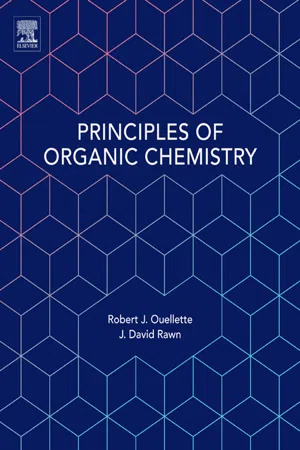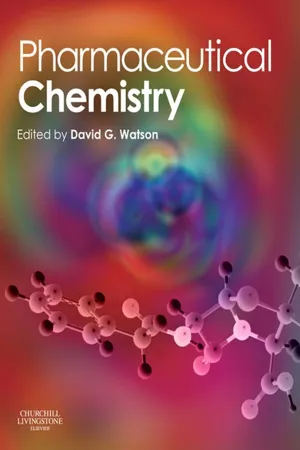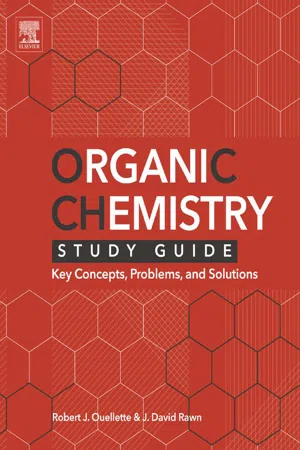Chemistry
Uses of Amines
Amines are used in various applications, including as intermediates in the production of pharmaceuticals, dyes, and pesticides. They are also utilized as corrosion inhibitors, in the manufacturing of rubber and plastics, and as solvents in the chemical industry. Additionally, amines play a crucial role in the synthesis of polymers and as components in the production of surfactants and detergents.
Written by Perlego with AI-assistance
Related key terms
Related key terms
1 of 4
Related key terms
1 of 3
4 Key excerpts on "Uses of Amines"
- eBook - ePub
- (Author)
- 2014(Publication Date)
- Wiley-VCH(Publisher)
With a worldwide production (2000) of several 100 000 t/a, the aliphatic amines are among the most important organic intermediates in the chemical industry. The range of uses of these compounds is correspondingly wide. Major uses include those in the production of agrochemicals (in particular, herbicides), dyes, drugs, surfactants, and plastics, as auxiliaries for the rubber, textile, and paper industries, and as anticorrosion agents and process chemicals for gas scrubbing.2. General Chemical Properties
The chemistry of the aliphatic amines is determined by the electron lone pair on the nitrogen atom and by the tendency of the hydrogen atoms bonded to nitrogen to be replaced by other substituents.2.1. Salt Formation
Because they carry alkyl substituents, the aliphatic amines are stronger bases than ammonia (see Table 1 ); with acids, they form salts that are very soluble in water but insoluble in organic solvents. This property, combined with the difference in solubility between amine and salt, makes amines good acid acceptors and solvents for gas scrubbing and for certain extraction processes (e.g., in the synthesis of semisynthetic penicillins).2.2. Conversion to Carboxamides
Amines react with carboxylic acids and their esters, chlorides, and anhydrides to give the corresponding substituted carboxamides:Very good yields are obtained, particularly with carboxylic acid chlorides, for which the reaction is highly exothermic. With carboxylic acids, the reaction often stops at the initially formed ammonium salt. This type of reaction is utilized industrially, for example, in the synthesis of various herbicides with an acid amide structure.2.3. Conversion to Sulfonamides
The reaction with benzenesulfonyl chloride is utilized for distinguishing among primary, secondary, and tertiary amines (Hinsberg test), as well as for their preparative separation. Whereas primary amines form alkali-soluble N -alkyl benzenesulfonamides, secondary amines give alkali-insoluble N ,N - eBook - ePub
- Robert J. Ouellette, J. David Rawn(Authors)
- 2015(Publication Date)
- Elsevier(Publisher)
12Amines and Amides
12.1 Organic Nitrogen Compounds
For most of this text we have concentrated on the compounds of carbon, hydrogen, and oxygen. We have paid less attention to compounds containing sulfur and nitrogen. Nitrogen is the fourth most common element in living systems after carbon, hydrogen, and oxygen. Organic compounds containing nitrogen are widely distributed in plants and animals and are necessary for life. Nitrogen is present in many vitamins and hormones. Nitrogen is essential in amino acids and proteins, in nucleotides and nucleic acids, and in scores of other cellular molecules. In addition, many nitrogen-containing compounds are important industrial products, including polymers such as nylon, many dyes, explosives, and pharmaceutical agents.A nitrogen atom, which has five valence electrons, forms a total of three covalent bonds to carbon or hydrogen atoms in neutral compounds. A nitrogen atom in a functional group can form single, double, or triple bonds. We have discussed these functional groups in previous chapters. In this chapter we will focus on amines and amides, but we will also discuss other functional groups that are either the reactants required to form amines and amides or the products of their reactions.Some amines affect the brain, spinal cord, and nervous system. These compounds include the neurotransmitters epinephrine, serotonin, and dopamine (Figure 12.1 ). Epinephrine, commonly called adrenaline, stimulates the conversion of stored glycogen into glucose. Serotonin is a hormone that causes sleep, and serotonin deficiency is responsible for some forms of mental depression. In Parkinson's disease, the dopamine concentration is low.Figure 12.1 Structures of NeurotransmittersProteins are made from nitrogen-containing molecules called α-amino acids. In proteins, each amine functional group of one α-amino acid is bonded to the carbonyl carbon of another α-amino acid in a chain of amino acyl groups that contains many amide bonds, or peptide bonds. - eBook - ePub
- David G. Watson(Author)
- 2011(Publication Date)
- Churchill Livingstone(Publisher)
Fig. 3.18 ).Salts are sometimes chosen with regard to their organoleptic properties and, for instance dextropropoxyphene napsylate (Fig. 3.18 ), is sometimes used because it is not as bitter as the hydrochloride.Reactions of amines in relation to storage and formulation
Oxidation
All amines are prone to oxidation in air and aromatic amines are particularly unstable in this regard. Primary amines are susceptible to oxidation on the α-carbon, the reaction being catalysed by light (Fig. 3.19 ).Figure 3.19 Oxidation of primary amines.Secondary and tertiary amines behave in a similar manner (Fig. 3.20 ).Figure 3.20 Oxidation of secondary and tertiary amines.As well as being susceptible to oxidation on the α-carbon, tertiary amines readily form N-oxides. Traces of these compounds are usually formed when an aqueous solution of a tertiary amine is stored for a few days. N-oxides are fairly unstable and readily decompose to an aldehyde and a secondary amine.Acylation
Primary and secondary amines can be chemically acylated with, for instance, an acid anhydride (Fig. 3.21 ) to give an amide, e.g. the acetylation of acetanilide, but this process can also occur with chemically incompatible ingredients in formulations. For example, aspirin is an acetylating reagent and can react with amines such a phenylephrine. Both of these drugs are present in some proprietary formulations for treating colds and flu. Stearic acid is another possible acylating reagent since it is used as a releasing agent in some tablet formulations.Figure 3.21 Acetylation of amines.Acetylation of amines is an important route for the metabolism of primary aromatic amines such as the sulphonamide drugs or the antituberculosis drug isoniazid (Fig. 3.22 - eBook - ePub
Organic Chemistry Study Guide
Key Concepts, Problems, and Solutions
- Robert J. Ouellette, J. David Rawn(Authors)
- 2014(Publication Date)
- Elsevier(Publisher)
23Amines and Amides
Keys to the Chapter
23.1 Organic Nitrogen Compounds
Because nitrogen has five valence shell electrons, it can form three covalent bonds in neutral compounds, leaving one nonbonding electron pair. These bonds can be three single bonds as in amines and amides, one double bond and a single bond in imines, or a triple bond in nitriles.Nitrogen is found in many biologically important compounds that have a wide range of physiological properties. However, once a nitrogen-containing functional group is identified, its chemical reactions can often be predicted since the functional groups in these compounds, whose structures are often complex, have the characteristic reactivities of much simpler compounds.23.2 Bonding and Structure of Amines
Amines are pyramidal at the nitrogen atom, with approximately tetrahedral bond angles to all bonded atoms. The nitrogen atom in amines is sp3 hybridized. However, the configuration of an amine is not static. Amines undergo nitrogen inversion to give mixtures of mirror images. The process occurs via a planar transition state. The energy barrier to inversion is low, and nitrogen inversion is rapid so that amines with chiral nitrogen atoms cannot be isolated.23.3 Classification and Nomenclature of Amines
Amines are classified according to the number of alkyl or aryl groups bonded to the nitrogen atom. Primary, secondary, and tertiary amines have 1, 2, and 3 groups bonded, respectively. Amides are classified the same way, with the acyl group counting as one of the carbon groups bonded to the nitrogen atom. Abbreviations for the classes of amines and amides are 1°, 2°, and 3°.The common names of simple amines are based on the identity of the alkyl or aryl groups bonded to the nitrogen atom. The names of the alkyl groups are written in alphabetical sequence as one word, followed by the word amine.
Index pages curate the most relevant extracts from our library of academic textbooks. They’ve been created using an in-house natural language model (NLM), each adding context and meaning to key research topics.
Explore more topic indexes
Explore more topic indexes
1 of 6
Explore more topic indexes
1 of 4



